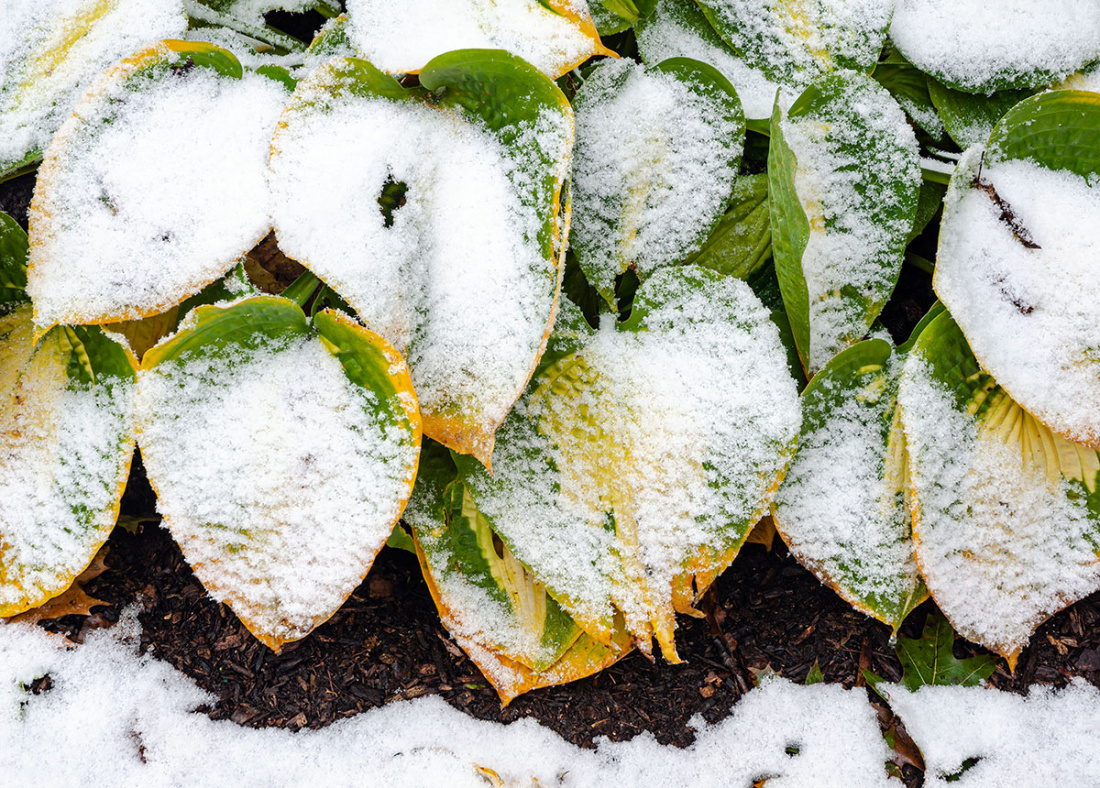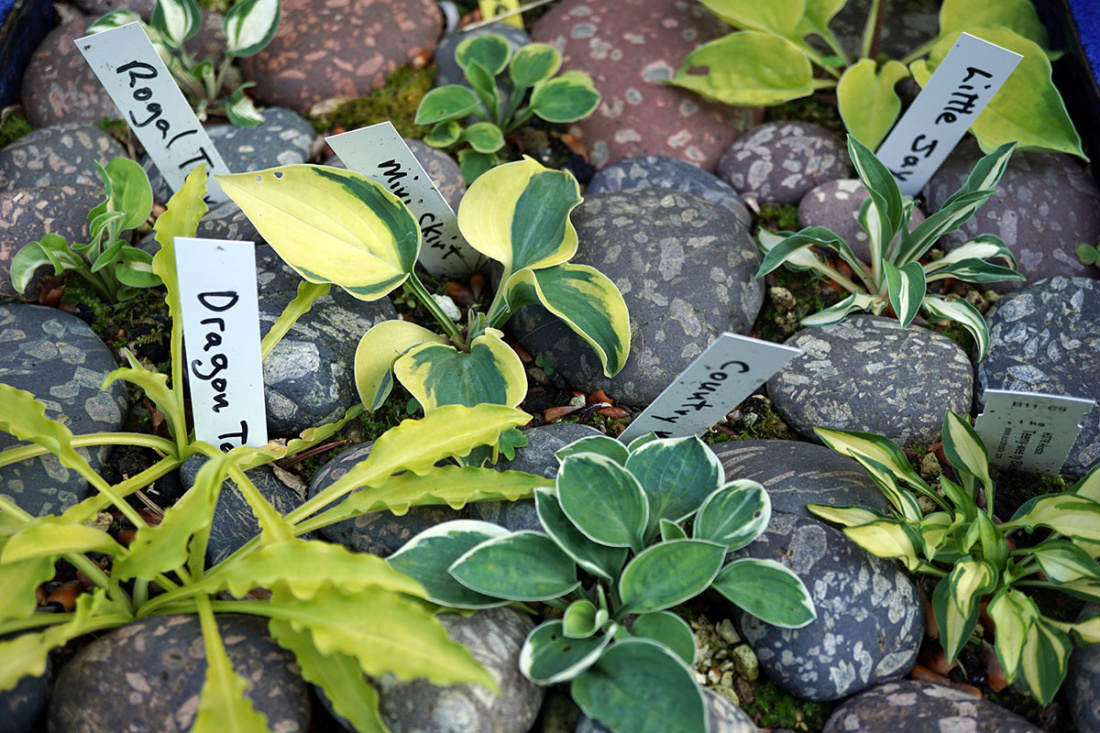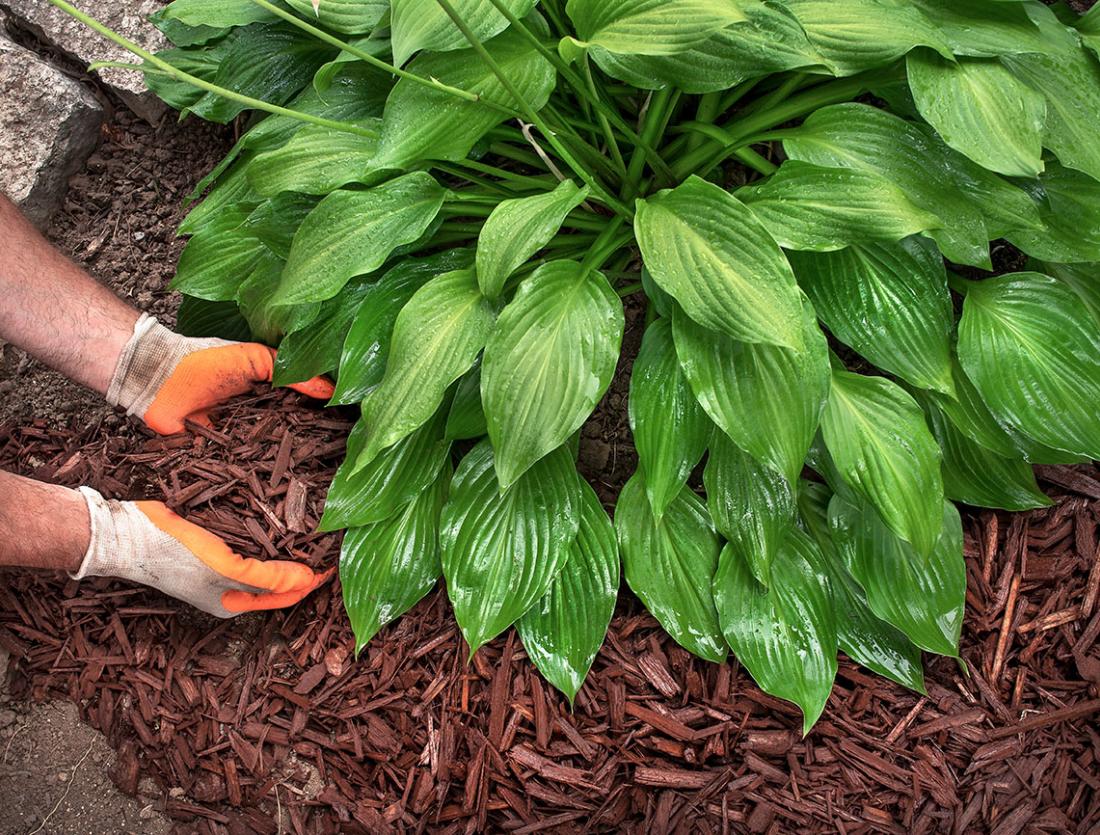When the autumnal equinox and first freezing temperatures quickly approach, you might be wondering if your Hostas can withstand a freeze.
Hosta can withstand a freeze; they are hardy perennial plants that live in hardiness zones 3-9. However, Hostas can still suffer from frost damage and freeze in certain circumstances.
Frost and freezes, you say? You mean, there’s a difference? As a matter of fact, yes, there is, and we will explore that and more in this article. If you’d like to learn more about Hostas, or if you need to know how to prepare your Hostas for the colder temperatures ahead, you are concerned that your Hostas have already suffered damage, read on, so you know just what to do.
Hosta Plants and Hardiness
Hostas are herbaceous perennial plants that are an extremely popular choice for the shade garden and are known for their beautiful foliage and versatility.
They are revered for their low-maintenance and hardiness, thriving in hardiness zones 3 through 9; they can survive temperatures as low as -40 degrees Fahrenheit when planted in the ground, and require very little maintenance. Hostas go dormant in the winter and return in the spring to provide beautiful foliage to your garden all season long with flowers in late summer.

When Are Hostas Susceptible to Winter Damage?
Hostas are known for their hardiness, but that doesn’t mean they are not susceptible to winter’s effects. Here are the circumstances that make Hostas more vulnerable to damage when the temperatures drop:
Container Hostas: Hostas in containers are more exposed and, therefore, more vulnerable to windchill temperatures.
Late Planting: Hostas planted late in the fall have not had a chance for their roots to grow deep enough to be protected from colder temperatures.
Fluctuating Temperatures: Alternating freeze/thaw cycles can jeopardize a Hosta’s health by causing frost heaving. Frost heaving is a process where moisture in the soil expands and contracts, pushing the roots up and exposing them to the elements.
Late Frost Damage: If your region experiences a late frost in the spring after new leaves have emerged, your Hosta may suffer damage.
When Should You Prepare Hostas for Winter?
Generally speaking, it’s recommended to start preparing your plants for winter well before the first sign of frost, as this is when they’ll be the most vulnerable.
Having heard the words frost and freeze used interchangeably among gardening circles, you may be wondering: What’s the difference?
Well, technically speaking, frost refers to a visible frost, which is a layer of ice crystals that forms on the surface of a plant. Freeze refers to air temperatures reaching 32 degrees Fahrenheit, the freezing water point (Source: Old Farmers’ Almanac).
It is important to note that you can have freezing temperatures without frost and that frost can occur when temperatures are above freezing. If the dew point is below freezing, conditions are more likely to result in frost.
Most gardeners will refer to the first freeze date as the first frost date. You can easily determine your hardiness zone and check for your first average frost dates using an online guide such as this handy map and table offered by The Spruce.
Knowing when your first frost date may provide you with a useful timeline to prepare your Hostas from harsher weather before it’s too late.
How to Protect Hostas from Freeze Damage
Now that you know when Hostas might be more vulnerable to damage from frost or freezing temperatures, here are some preventive measures you can take to ensure your Hostas are prepared to withstand the elements.
Location, Location, Location
As in real estate, location is everything. Where you plant your Hostas, to begin with, can have a great deal to do with how it fares the seasons.
The northern sides of homes and buildings will receive less sunlight and warmth, meaning the ground will remain frozen for longer.
The east side of homes and structures will get early morning sun, which may lend to the earlier sprouting of new growth.
Hostas planted under a tree canopy can be shielded from the elements more so than those in exposed areas.

Preparing In-Ground Hostas
In-ground Hostas will receive better protection from freezing temperatures than their container counterparts. This is due to the insulating effect the surrounding earth and soils have on the plants' roots.
It is important to note that the consensus is divided for fall care of Hostas in preparation for winter. Some folks say to just let the leaves brown and go down, leaving them be to provide that extra layer of mulch for its needed winter protection. Others say just the opposite.
For your planted Hostas, you may choose to leave them be, or follow these tips to protect them from winter damage:
Trim: Trim down to the ground just after the first frost, leaving only a few inches of stalk left, so you know where your Hostas are in the spring.
Remove Leaves: Be sure to dispose of the cut leaves and dead foliage to avoid inviting any overwintering pests to move in.
Mulch: Add an insulating layer of mulch 2-4” thick to the crown to protect your Hosta for the winter. Mulch can be leaves, bark, or pine needles, and should be removed in the spring when there is no more danger of freezing temperatures.
Preparing Container Hostas
Container Hostas are much more vulnerable to winter damage due to their exposure to ambient temperatures and freeze/thaw cycles. Therefore, additional measures should be taken to ensure your Hostas return in the spring at their best.
Trim: Like planted Hostas, trim your container Hosta down to the stalks after the first frost, or when the leaves have gone down for the season.
Mulch: Add a layer of mulch to cover the plant.
Move: Consider moving your Hostas to a sheltered, protected area for the winter. An unheated garage or garden shed is ideal. In doing this, you will need to water your Hosta when dry, but only if temperatures are above freezing and the soil thaws.
Huddle: You may choose to huddle your Hostas together for protection in numbers, rather than relocating them to a sheltered area. If you go the huddling route, cover them with plant matter such as leaves.
Sink: Another option for your potted Hostas is to dig a hole big enough for your Hosta in its container, and sink it in the ground, covering it with a few inches of mulch for the season.
Nighttime Covering: Whatever route you go, if your potted Hostas are out in the elements for the winter, you will want to provide them with a nighttime covering. This can be burlap, frost cloth, sheets, cardboard boxes, or even inverted pots. You don’t want to use plastic, as it is not breathable, it is too thin to provide adequate protection from freezing temperatures, and can actually cause more damage by trapping moisture in.
What to Do if Your Hostas Suffer Freeze Damage
Even with the best intentions, one can only do so much, and you can’t control the weather. But you can mitigate damages in the event they do occur.
First, cut off the most damaged leaves, being sure to discard them so as not to invite disease or pests. It would be best if you left those leaves which suffered the least damage so that the plant can still photosynthesize. Watch for crown rot and provide adequate water while your Hostas are healing. You may wish to add a layer of mulch for added protection.
But most of all, be patient. Your Hostas will most likely recover.

Hostas are beautiful, versatile plants that take center stage in your shade garden and can withstand even the harshest winters. With a little know-how, you can ensure that your Hostas not only survive, but thrive, and come back better than ever in the spring.


